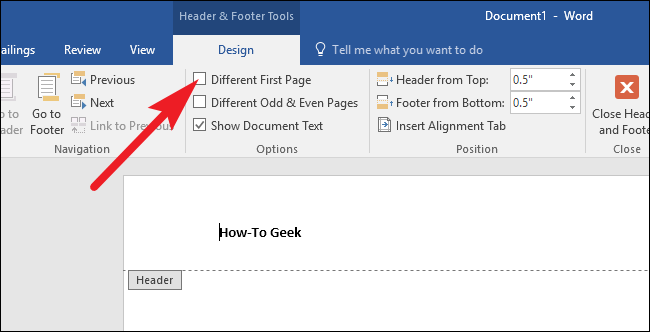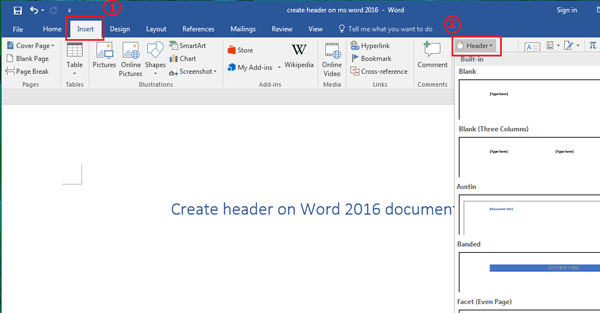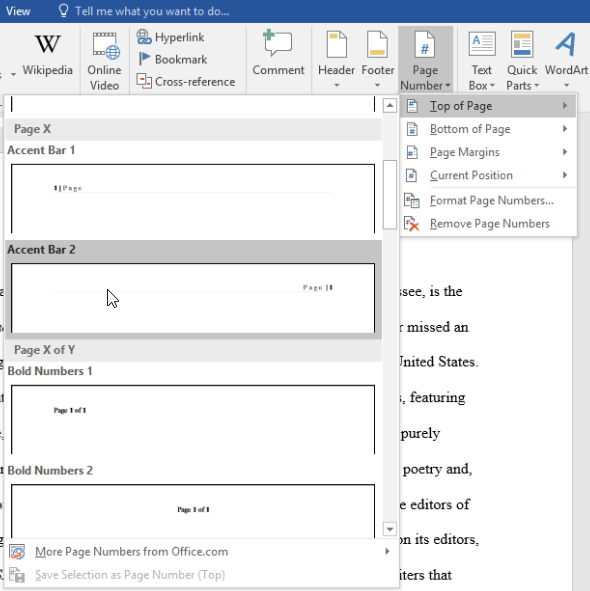

- #WORD 2016 HEADER AND FOOTER DESIGN TOOL BAR FOR FREE#
- #WORD 2016 HEADER AND FOOTER DESIGN TOOL BAR HOW TO#
When designing, take into account that your app will be used in several contexts even people who prefer to use a two-handed grip will not always be in a situation where they can use more than one finger, let alone both hands to interact with your UI. Representation of the comfort of a person's one-handed reach on a smartphone. Green indicates the area a user can reach easily yellow, an area that requires a stretch and red, an area that requires users to shift the way they’re holding a device. In the figure below, the diagrams on the mobile phones’ screens are approximate reach charts, in which the colors indicate what areas of a screen a user can reach and interact with their thumb. In his research on mobile device usage, Steven Hoober has found that 49% of people rely on one-thumb to accomplish things on their phones.

Your navigation should use “The Principle of Least Surprise.” Navigation should inspire users to engage and interact with the content you are delivering.

Do not confuse your user - keep words and actions consistent. Don’t move the navigation controls to a new location on different pages. The navigation system for all views should be the same.
#WORD 2016 HEADER AND FOOTER DESIGN TOOL BAR HOW TO#
Users don’t have to think about how to navigate to make a purchase this element directs them to the appropriate action.

Think of the shopping cart icon it serves as an identifier to check out or view items. Users should know how to go from point A to point B on first glance, without any outside guidance. You need to focus on delivering messages in a clear and concise manner. Navigation function must be self-evident. Navigation should be available at all times, not just when we anticipate a user needs it. This means that you should minimize the user’s memory load by making actions and options visible. VisibleĪs Jakob Nielsen says, recognizing something is easier than remembering it. An approach to this is to prioritize content and navigation for mobile apps according to the tasks a mobile user is most likely to carry out. Good navigation should feel like an invisible hand that guides the user. Here are four important rules for creating a great mobile navigation:įirst, and most importantly, a navigation system must be simple. While thinking outside the box is usually a good idea, there are some rules that you just can’t break. When you examine the most successful interaction navigation designs of recent years, the clear winners are those who execute fundamentals flawlessly. Navigation UI patterns are a shortcut for good usability.
#WORD 2016 HEADER AND FOOTER DESIGN TOOL BAR FOR FREE#
If you want to take a go at prototyping your own navigation, you can download and test Adobe’s Experience Design CC for free and get started right away. In this post, we’ll help you better understand the principles of good navigation for mobile apps, then show you how it’s done using two popular patterns. When we examine the most successful interaction navigation designs of recent years, the clear winners are those who execute fundamentals flawlessly. It doesn’t matter how good your site or app is if users can’t find their way around. Whether it’s a site or app, it’s more like a conversation. Design also covers how users engage with a product. Design is more than just good looks – something all designers should know.


 0 kommentar(er)
0 kommentar(er)
